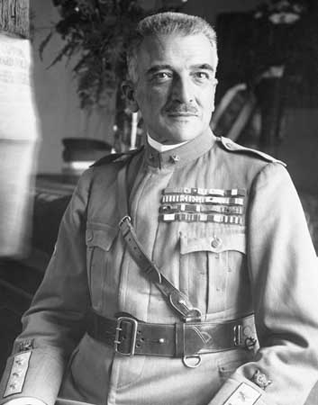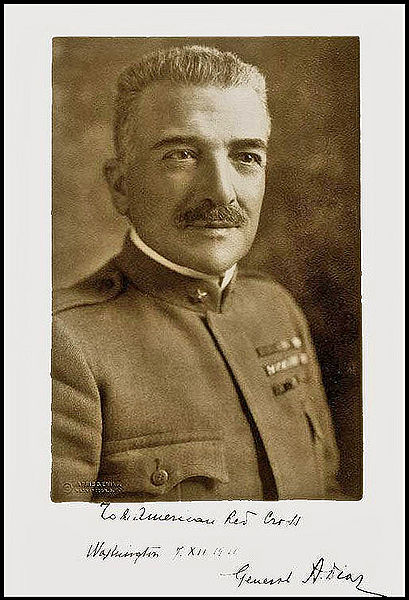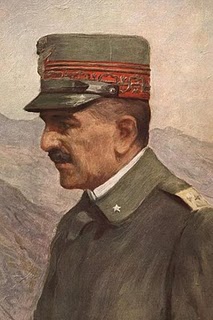<Back to Index>
- Physicist Arnold Johannes Wilhelm Sommerfeld, 1868
- Poet Afanasy Afanasievich Fet (Shenshin), 1820
- Marshal of Italy Armando Diaz, 1st Duca della Vittoria, 1861
PAGE SPONSOR



Armando Diaz, 1st Duca della Vittoria (December 5, 1861 – February 29, 1928) was an Italian general and a Marshal of Italy.
Born in Naples, Diaz began his military career as a student at the Military Academy of Turin, where he became an artillery officer. He was a colonel commanding the 93rd infantry during the Italo - Turkish War, and major general in 1914. On the outbreak of the World War I, he was assigned to the high command as head of the unit's operations under General Luigi Cadorna. He was promoted to 2-star general in June, 1916, and assumed the command of the 49th division and then the 23rd army corps.
The Battle of Caporetto, in October 1917, was disastrous to the army, and on November 8, 1917, he was called to succeed Cadorna as chief of general staff. Having recovered what remained of the army, he organized the resistance in 1917 on the Monte Grappa massif and along the Piave River, which successfully halted the Austrian offensive. In summer of 1918 he oversaw the victory in the Battle of the Piave River and later that year led the Italian troops in the Battle of Vittorio Veneto, which ended the war on the Italian front. With his famous Bollettino della Vittoria (Victory Address) he communicated the rout of the Austrian army and victory of the Italians in the war.
On November 1, 1921 Diaz was in Kansas City to attend the groundbreaking ceremony for the Liberty Memorial that was being constructed there. Also present that day were Lieutenant General Baron Jacques of Belgium, Admiral David Beatty of Great Britain, Marshal Ferdinand Foch of France, and General John J. Pershing of the United States. One of the main speakers was Vice President Calvin Coolidge of the United States. In 1935 bas-reliefs of Jacques, Foch, Diaz, and Pershing by sculptor Walker Hancock were added to the memorial.
After the war Armando Diaz was appointed as a senator. In 1921 he was ennobled by King Victor Emmanuel III and given the victory title of 1st Duca della Vittoria ("Duke of Victory"). Benito Mussolini named him Minister of War, and he was promoted to Field Marshal. Upon retirement, in 1924, he was given the honor of Marshal of Italy (Maresciallo d'Italia). Diaz died in Rome in 1928; he was buried in the church of Santa Maria degli Angeli e dei Martiri, next to admiral Paolo Thaon di Revel.